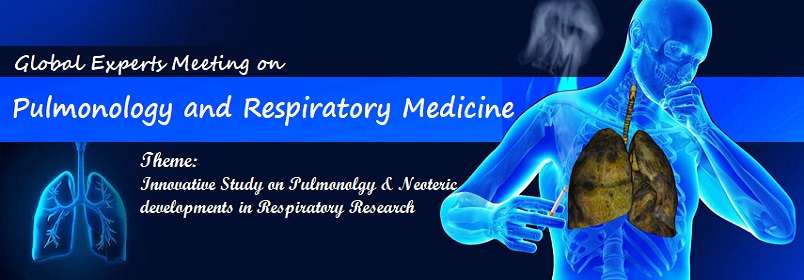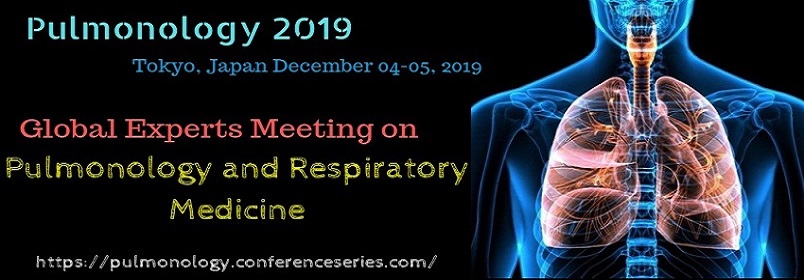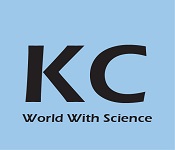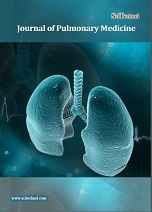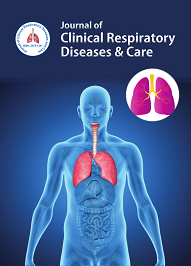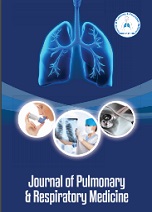Theme: Innovative Study on Pulmonology & Neoteric developments in Respiratory Research
Pulmonology 2019
Conference Series LLC Ltd. is overwhelmed to invite all the participants across the globe to attend “11th Global Experts Meeting on Pulmonology and Respiratory Medicine(Pulmonology Conference 2019)” in the city of Tokyo, Japan on December 04-05, 2019. This extraordinary conference revolves around the theme “Innovative Study on Pulmonology & Neoteric developments in Respiratory Research”.
PulmonologyConference2019 is a common platform designed for International medical health professionals and pulmonologists to facilitate the dissemination and application of research findings related to Lungs. The Pulmonology Conference 2019 provides a global forum for discussions about new innovations to International scientists, researchers, doctors, young students as well as business professionals related to pulmonology.
Why to attend??
Pulmonology Conference 2019 will enlighten the world with recent advances in pulmonology research and inculcate new ideas about healthy breathing. Moreover, the Pulmonology Conference 2019 provides the participants a great networking with peers. Internationally prominent speakers, the novel techniques, and the modern updates in the lung research fields are the unique attributes of this conference. Pulmonology Conferences, symposiums and Workshops provide a dedicated forum for the advancement, execution and exchange of information about Pulmonology and COPD.
ConferenceSeries LLC Ltd. provides an opportunistic environment and vibrant podium through (Pulmonology Conference 2019) event to amplify these steps and meet the highest demand ever, by reflexive connections.
Pulmonology and Respiratory Medicine 2019 provides an excellent opportunity to share views, exchange knowledge and establish research collaborations & networking.
Pulmonology Conference 2019 brings together individuals who have an interest in the field of Respiratory and Pulmonary Diseases relating to diversified topics like COPD, emphysema, asthma, cystic fibrosis, lung cancer, other pulmonary diseases and therapeutics.
Target Audience for (Pulmonology Conference 2019)
- Pulmonologists
- Cardiologists
- ScientisPhysicians/Consultants/ General Practitioners
- Directors/Managers
- Pathologists
- Presidents & Vice Presidents/ Directors / Administrators
- Business Entrepreneurs
- Pulmonology Pharma Companies
- COPD Associations/ Societies
- Training Institutes
- Young Researchers
- Medical Students
- Nurses
- Residents
- Medical Devices Companies
- Pulmonary Medicine and surgery related Companies
Track 1: Cardiopulmonary Sciences
Chronic obstructive pulmonary disease is related with increased risk of cardiovascular disease, for instance, heart failure or a heart attack. The lungs and the heart work solidly together to supply the oxygen; oxygen in the air comes into the lungs is moved into the circulation system, which the heart by then pushes out to rest of the body. However, diseases in both the heart and the lungs regularly go together. If person have COPD at that point there is a higher risk of having cardiovascular diseases. Comorbidities and chronic obstructive pulmonary disease (COPD) are pervasive, with cardiovascular disease being the most notable and significant. Risk factors for COPD and Cardiovascular Diseases such as smoking, low socioeconomic class, and a sedentary way of life contribute to the natural history of each of these conditions. COPD Conferences will focus on the scope of COPD related to cardiovascular diseases.
Track 2: Breathing Disorders
Chronic obstructive pulmonary disease is a most common progressive lung disease that makes it hard to breathe. Two main forms of COPD are chronic bronchitis and emphysema. Treatment include inhaled bronchodilators, steroids, quitting smoking, vaccinations and rehabilitation. Long term oxygen therapy or lung transplantation benefit some people.
Track 3: Cardiopulmonary Sciences
Cardiovascular and pneumonic illnesses are conditions that influence the lungs and heart. Cardiovascular recovery may profit the individuals who have encountered an ongoing heart assault or cardiovascular medical procedure, and also other heart-related medical issues. Respiratory recovery might be valuable to people with asthma, perpetual bronchitis, endless obstructive pneumonic illness (COPD), emphysema, or other lung conditions.
Presentation to tobacco smoke has for quite some time been perceived as an unmistakable hazard factor for CVD. Correspondingly limiting presentation to tobacco smoke is the main compelling approach to counteract COPD.
Track 4: Chronic Obstructive Pulmonary Disease
Chronic obstructive pulmonary disease (COPD) is a chronic inflammatory lung disease it causes obstructed airflow from the lungs. Chronic obstructive pulmonary disease Symptoms includes breathing difficulty, cough, mucus (sputum) production and wheezing. Chronic obstructive pulmonary disease caused by long-term exposure to irritating gases or particulate matter, most often from cigarette smoke.
Emphysema and chronic bronchitis are the two most common conditions that contribute to chronic obstructive pulmonary disease. Most instances of pulmonary diseases can be prevented by lessening presentation to hazard factors this incorporates diminishing rates of smoking and enhancing indoor and open air quality. While treatment can moderate declining, no cure is known.
Track 5: Respiratory Tract Infections
Respiratory tract infection alludes to any of various irresistible illnesses including the respiratory tract. A disease of this write is regularly additionally delegated an upper respiratory tract infection or a lower respiratory tract infection. Lower respiratory diseases, for example, pneumonia, have a tendency to be much more genuine conditions than upper respiratory contaminations, for example, the regular icy. Albeit some contradiction exists on the correct limit between the upper and lower respiratory tracts, the upper respiratory tract is by and large thought to be the aviation route over the glottis or vocal lines. This incorporates the nose, sinuses, pharynx, and larynx.
Commonplace infection of the upper respiratory tract incorporate tonsillitis, pharyngitis, laryngitis, sinusitis, otitis media, certain kinds of flu, and the basic cool. Manifestations of URIs can incorporate hack, sore throat, runny nose, nasal blockage, cerebral pain, second rate fever, facial weight and sniffling. The lower respiratory tract comprises of the trachea (wind pipe), bronchial tubes, the bronchioles, and the lungs.
Track 6: Lung transplantation
A lung transplant is a surgical procedure to replace a diseased or failing lung with a healthy lung, usually from a deceased donor. Depending on your medical condition, a lung transplant may involve replacing one of the lungs or both of them. In some situations, the lungs may be transplanted along with a donor heart. While lung transplants carry certain associated risks, they can also extend life expectancy and enhance the quality of life for end-stage pulmonary patients.
Track 7: Lung Cancer and Treatment
Lung cancer, also known as lung carcinoma, is a malignant lung tumor characterized by uncontrolled cell growth in the tissues of the lung. The two main types are small-cell lung carcinoma and non-small-cell lung carcinoma. The most common symptoms are coughing, weight loss, shortness of breath and chest pain.
Track 8: Lung Infection and Treatment
Lung infections usually caused by viruses but can be caused by bacteria. Common lung infections are including flu, bronchitis, pneumonia, bronchiolitis, and tuberculosis. Various treatment methods available for the treatment of lung infections include antibiotics and anti-viral vaccines etc.
Track 9: Pulmonary diseases-Treatment and therapies
Diagnosis: Specialist will audit the signs and side effects, talk about the family and restorative history, and examine any presentation necessary to lung aggravations particularly tobacco smoke. Specialist may arrange a few tests to analyze the condition. Tests incorporate Lung (respiratory) work tests, Chest X-beam, CT examine, blood vessel blood gas examination and Laboratory tests.
Treatment: Smoking Cessation the most basic advance in any treatment get ready for COPD. Other treatment incorporates Bronchodilators, breathed in steroids, Combination inhalers, Oral steroids, Theophylline and anti-infection agents. An analysis of COPD isn't the apocalypse. The vast majority have mellow types of the ailment for which little treatment is required other than smoking discontinuance. Notwithstanding for further developed phases of malady, powerful treatment is accessible that can control side effects, decrease your danger of confusions and intensifications, and enhance your capacity to lead a dynamic life.
Track 10: Bronchoscope Technique
A bronchoscopy is a procedure used to help diagnose conditions associated with the lungs and the airways (known as the bronchi). A bronchoscopy is carried out using a bronchoscope, of which there are two types of bronchoscope:
Fiber-optic flexible bronchoscope: this is the most common type of bronchoscopy. The bronchoscope is a thin, flexible tube, which is roughly the same thickness as a pencil. The tube is passed through the nostrils, down the throat and trachea (windpipe) and into the bronchi. This procedure is carried out under sedation.
Rigid bronchoscope: this type of bronchoscope is like a fine telescope and the procedure must be carried out under general anesthetic.
Track 11: Pulmonary Cancer
Pulmonary cancer or lung cancer is also termed as carcinoma of the lung or pulmonary carcinoma is uncontrollable cell growth in tissues of the lung. Carcinogenic factors (chemicals, cigarette smoking, air pollution and asbestos attribute lung cancer). Treatment involves surgery, chemotherapy and radiation therapy.
Track 12: Pulmonary Critical Care
Pulmonary critical care is caring for patients with diseases related to lungs such as asthma, lung cancer, tuberculosis, fungal infections to the lung, pulmonary vascular diseases and breathing etc. Critical care provides clinical evaluation, diagnosis and treatment services to patients with health problems.
Track 13: Pulmonary Parenchyma
Pulmonary parenchyma refers to the portion of lung often used solely to alveolar tissue and any form of lung tissue including bronchioles, bronchi, blood vessels, interstitial and alveoli involved in gas transfer. CT is used in assessing overall decreases radiographic density with its superior contrast resolution.
Track 14: Respiratory Pharmacology
Respiratory pharmacological medicine primarily deals with agents accustomed treat the “pathological triad” of respiratory organ sickness. The pathological triad consists of: spasm, airway inflammation, and preserved secretions. Agents accustomed treat these conditions accommodates bronchodilators, anti-muscarinic, corticosteroids, microkinetic, mucolytic, and decongestants, among others. Further reagents utilized in the treatment of respiratory organ sickness square measure gas, antibiotics, native anesthetics’, metabolism stimulants, and muscle relaxers. All of those, with the exception of gas, square measure mentioned during this paper. explicit stress is placed on medications delivered in Associate in Nursing aerosol kind.
Track 15: Tuberculosis
TB is an infectious disease that generally have an effect the lungs. It is the second greatest killer due to a single infectious agent throughout the world, and in 2012, 1.3 million people expire from the disease, with 8.6 million falling ill. The tuberculosis bacterium causes TB. It is the extent through the air from person to person, when people with TB affecting the lungs cough, sneeze, spittle, laugh or talk. TB is infectious, but it is not easy to catch. The chances of catching TB from someone remain alive or work with are much higher than from a stranger. The symptoms include Coughing, chills, tiredness, Fever, Loss of Weight, Loss of appetite.
Track 16: Chest physical therapy
Chest physical therapy is used to improve respiratory efficiency, expansions of lungs, improves respiratory muscles and eliminates secretions from respiratory system. It helps in free breathing and gets more oxygen in to body. It includes deep breathing exercises, chest vibration, postural drainage, chest percussion, turning, and coughing.
Chest physical therapy can be performed in a variety of settings including critical care units, hospitals, nursing homes, outpatient clinics, and at the patient's home. Depending on the circumstances, chest physical therapy may be performed by anyone from a respiratory care therapist to a trained member of the patient's family.
Track 17: Pneumonia
Pneumonia is an infection in one or both lungs. It can be caused by bacteria, viruses, or fungi. Bacterial pneumonia is the most common type in adults. Pneumonia causes inflammation in the air sacs in the lungs, which are called alveoli. The alveoli fill with fluid or pus, making it difficult to breathe. When the germs that cause Pneumonia reach the lungs, the lungs' air sacs (alveoli) become inflamed and fill up with fluid.
When the person hangs the Pneumonia, oxygen may have trouble reaching the blood. If there is too little oxygen in the blood, the body cells can't work properly. Because of this and the risk of the infection spreading through the body, Pneumonia can cause death. Pneumonia affects the lungs in two ways. It may be in only one part, or lobe, of the lung, which is called lobar Pneumonia. Or, it may be widespread with patches throughout both lungs, which is called bronchial Pneumonia
Track 18: Asthma and Allergy
Allergic asthma is asthma caused by an allergen’s reaction. It’s also known as allergy-induced asthma. Allergic asthma is the most common type of asthma. About 90% of kids with childhood asthma have allergies, compared with about 50% of adults with asthma. The symptoms that go along with asthma show up after you breathe things called allergens like pollen, dust mites, or mold. Because allergens are everywhere, it's important that people with Allergic asthma know their triggers and learns how to prevent an attack.
During asthma, when the airway comes into contact with a trigger, the linings of the airway become inflamed and narrow. Mucus clogs and tightens the airways, making it difficult for someone having the breath. Each individual case of asthma is different, and each person has different reactions to various triggers. Some allergens are more common than others.
Pulmonology Conference Venue:

Oxygen Therapy Market Size to Reach USD 18.2 Billion By 2024
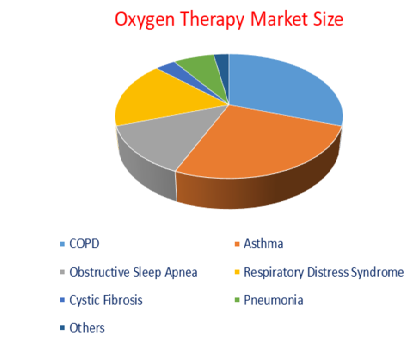
The global respiratory inhalers market was valued at US$ 27,424.4 million in 2016 and is expected to witness a robust CAGR of 5.7% over the forecast period (2017-2025).
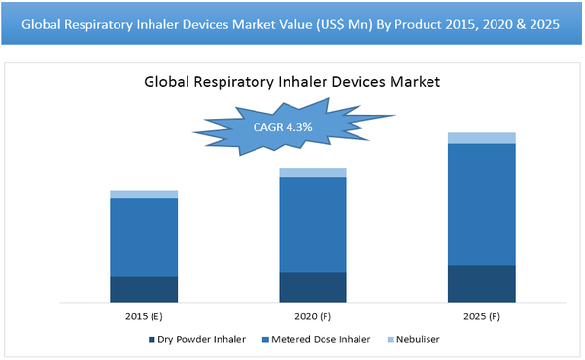
Conference Highlights
- Cardiopulmonary Sciences
- Breathing Disorders
- Chronic Obstructive Pulmonary Disease
- Lung transplantation
- Lung Cancer and Treatment
- Lung Infection and Treatment
- Pulmonary diseases-Treatment and therapies
- Pulmonary Cancer
- Pulmonary Critical Care
- Pulmonary Parenchyma
- Respiratory Pharmacology
- Lung transplantation
- Tuberculosis
- Chest pain Physical Therapy
- Pneumonia
- Asthma and Allergy
- Bronchoscopic Techique
- Respiratory Tract Infections
To share your views and research, please click here to register for the Conference.
To Collaborate Scientific Professionals around the World
| Conference Date | December 04-05, 2019 | ||
| Sponsors & Exhibitors |
|
||
| Speaker Opportunity Closed | |||
| Poster Opportunity Closed | Click Here to View | ||
Useful Links
Special Issues
All accepted abstracts will be published in respective Our International Journals.
- Journal of Pulmonary Medicine
- Journal of Pulmonary & Respiratory Medicine
- Journal of Clinical Respiratory Diseases and Care
Abstracts will be provided with Digital Object Identifier by

